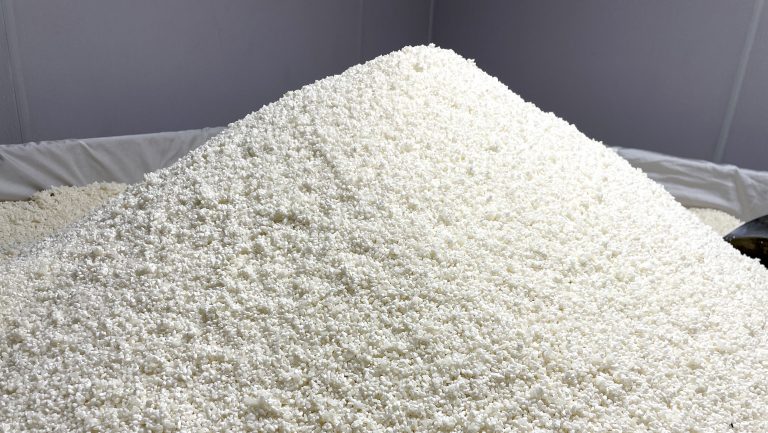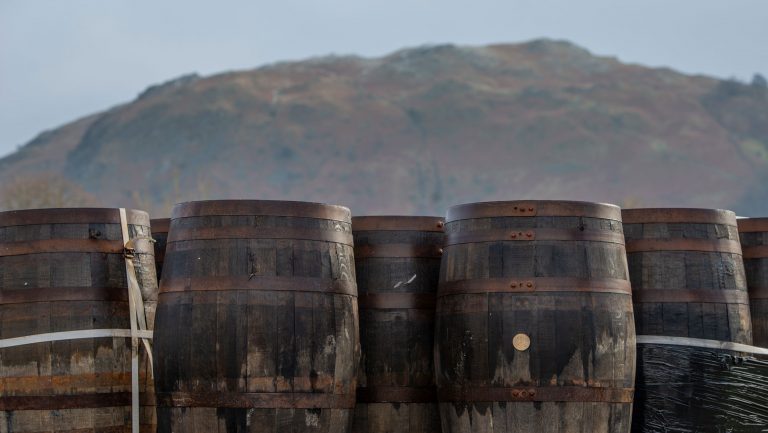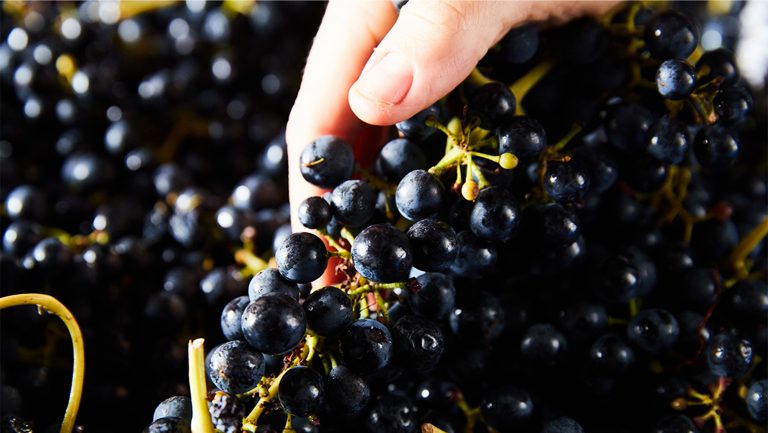Koji has increasingly caught the interest of western chefs, brewers, and others in the food and beverage world, though it’s not always well understood. “I think in the western world, koji is still in a kind of discovery phase,” says Brandon Doughan, the cofounder and head brewer of the New York sake brewery Brooklyn Kura. “But it’s one of the things that got me into all of this.”
Koji, a mold that thrives in hot, humid environments, was officially recognized as the National Fungi of Japan in 2006, and is used in the production of sake, shochu, miso, and soy sauce. Its role in sake production is unique in the world of brewing, and so vital that the Japanese government’s request to have UNESCO recognize sake as an Intangible Cultural Heritage mentions the mold explicitly in the title.
How exactly does koji—and its various species and strains—influence sake production? Here, sake brewers explain the science behind this unusual ingredient.

Don’t miss the latest drinks industry news and insights. Sign up for our award-winning newsletters and get insider intel, resources, and trends delivered to your inbox every week.
Koji’s Role in the Brewing Process
Koji’s job in the brewery is to provide the enzymes that convert the starches of rice into sugars, a process Doughan compares to malting in beer brewing. The sake brewer starts with a powdered form of koji spores, usually referred to as koji starter, tane koji, or seed koji, to differentiate it from the mold itself. Technically, the mold itself is koji, and the koji-covered rice is called kojimai, but most brewers refer to the koji-covered rice simply as koji.
Brewers sprinkle the koji starter onto a portion of the rice to be used for a batch of sake. The inoculated rice is kept bundled overnight in a room favorable to koji growth; around 30 to 32 degrees Celsius and 40 percent humidity is typical. Strict hygiene is vital, as many unwanted bacteria also thrive in these conditions.
“The next morning you can see white spots on the rice where the fungus is beginning to grow,” says Doughan. The brewery team spreads out the rice on a large table or into a number of small, shallow trays to disperse the heat and control the temperature. The goal is to get the microscopic filaments of the mold, called hyphae, to penetrate each rice grain evenly and consistently. “We’re trying to make each grain of rice into a little time capsule that will release its enzymes slowly and evenly over the month of brewing, so we get a balance between the activity of the yeast and the introduction of sugars.”
The mold’s job is done once the koji-covered rice is added to the main brewing tank, but the enzymes go on to ferment the starches into sugars at the same time yeast is turning those sugars into alcohol. “This is called double parallel fermentation,” says Mitsuhiro Ban, the master brewer at Hakutsuru Brewing in Kobe, Japan, “and it gives a higher alcohol than beer or wine. It’s normal for sake to finish brewing at up to 20 percent alcohol,” because the yeast never gets overwhelmed by too much sugar or alcohol at one time.
Koji releases over 50 enzymes into the rice grains. “From the brewing point of view,” says Philip Harper, the master brewer and general manager at Tamagawa Brewery in Kyoto prefecture, “the primary ones are the enzymes that liquefy the rice and break down the starch into smaller molecules, and then the saccharification enzymes that snip off the sugar molecules, creating glucose, which yeast will then metabolize into alcohol.”
These two enzymes are both forms of amylase, a protein that breaks down carbohydrates; according to a 2020 report, “one gram of pure amylase can saccharify two kilograms of starch in one hour at 50 degrees celsius.” Protease enzymes break down proteins in a similar manner, creating amino acids. “That gives sake umami and mouthfeel,” says Doughan, “and can also give it bitterness.” The degree of penetration of the hyphae determines how much of these characters are expressed.

Koji Species and Strains
The species and strain of koji used also influence the character of a sake. There are several species of koji; sake makers generally use Aspergillus oryzae, known as yellow koji, whereas shochu and awamori makers use Aspergillus kawachii and Aspergillus luchuensis, respectively. The latter two produce a high amount of citric acid; Doughan uses small amounts of them for one of his sakes, the Three Koji Sour Junmai, to give it a fresh, acid-driven character.
Research on the different species intensified after an incident in 1960, when koji mold was responsible for the death of 100,000 turkeys in the U.K. “Aspergillus oryzae is very similar to Aspergillus flavus, which exists in the wild,” says Ban. “However, the former does not produce a toxin called aflatoxin, while the latter does,” which is what killed the turkeys. “The non-poisonous oryzae is thought to have been domesticated from the poisonous flavus, just as humans domesticated the aggressive wild boar into the docile pig.” In humans, aflatoxins can cause liver cancer, so in the 1960s intensive research was undertaken to ensure that the oryzae species of koji was safe for consumption.
Subsequent research led to an explosion of new oryzae strains, and suppliers frequently offer blends of several strains to match the needs of the sake industry. The key differentiation is whether a brewer wants to make a lighter, more fragrant, ginjo-style sake, a more robust junmai sake, or an entry-level futsu-shu sake. “New yeasts have made it much easier to create highly aromatic ginjo sakes,” says Hideyuki Yamashita, the head of research at Higuchi Moyashi, a leading supplier of koji starter (Yamashita’s remarks throughout have been translated by Justin Potts, the director of brewer relations at Origami Sake). “But in order to do so, the koji being used must produce a particular balance of amylase. If the fermenting rice in the moromi (mash) dissolves quickly and rapidly produces alcohol, you won’t achieve the kinds of aromatics desirable in a ginjo-style sake.”
The balance between the liquefying and glucose-making amylase enzymes is key. On the rice grains, the mold should be “tsuki-haze,” which means spotted or speckled, rather than “so-haze,” where the grain is more uniformly covered. Yamashita says that in the latter case, the enzymes will be more assertive “and result in richer, more full-bodied sake” suited to junmai or futsu-shu sake.

Koji in a Changing World
Today, research on koji stretches from its traditional uses into new areas such as tea production, cheesemaking, and the fermentation of eggs and seaweed. Within the world of sake production, new trends and climate change are driving development. “Increased temperatures are causing problems for breweries due to the compositional changes in starch structure,” says Yamashita. “To compensate, many breweries are adjusting their koji making methods toward overall higher enzymatic activity.” Excess heat in the growing season creates hard rice grains that don’t absorb water as well; the enzymes then struggle to liquefy the rice during fermentation. According to Yamashita, this results in lower yields and sakes that taste thin and lack structure. When well-made koji isn’t enough, some breweries compensate with enzyme additions.
Yamashita also says rice growers are developing rice varieties that are more heat tolerant, often turning to heirloom varieties. “Previously, breweries were solely looking at function and ease of use, whereas now they’re more interested in local stories and character and things of that nature. And pretty much all of those rices do not behave in the same way” as the mainstream sake rice varieties, so new koji strains are being explored for use with them.
Despite these challenges and competition from advances such as enzyme additions, koji remains at the core of sake brewing, even if its fingerprints are less obvious to the sake drinker than other elements. “The impact from koji for the end user isn’t going to be nearly as apparent as, say, something like a distinctive yeast variety,” says Harper. “It’s kind of disappointing because it’s so incredibly critical to the process, but it’s sort of like it’s backstage. If you ask a hundred sake brewers ‘what’s the most important thing in sake brewing’ they will all hem and haw until you force them into a corner; then everyone will agree that it’s koji.”

Dispatch
Sign up for our award-winning newsletter
Don’t miss the latest drinks industry news and insights—delivered to your inbox every week.
Jim Clarke writes about wine, beer, and spirits for trade and consumer publications, including Beverage Media, Fortune, and World of Fine Wine. He is a sommelier and the U.S. marketing manager for Wines of South Africa.








